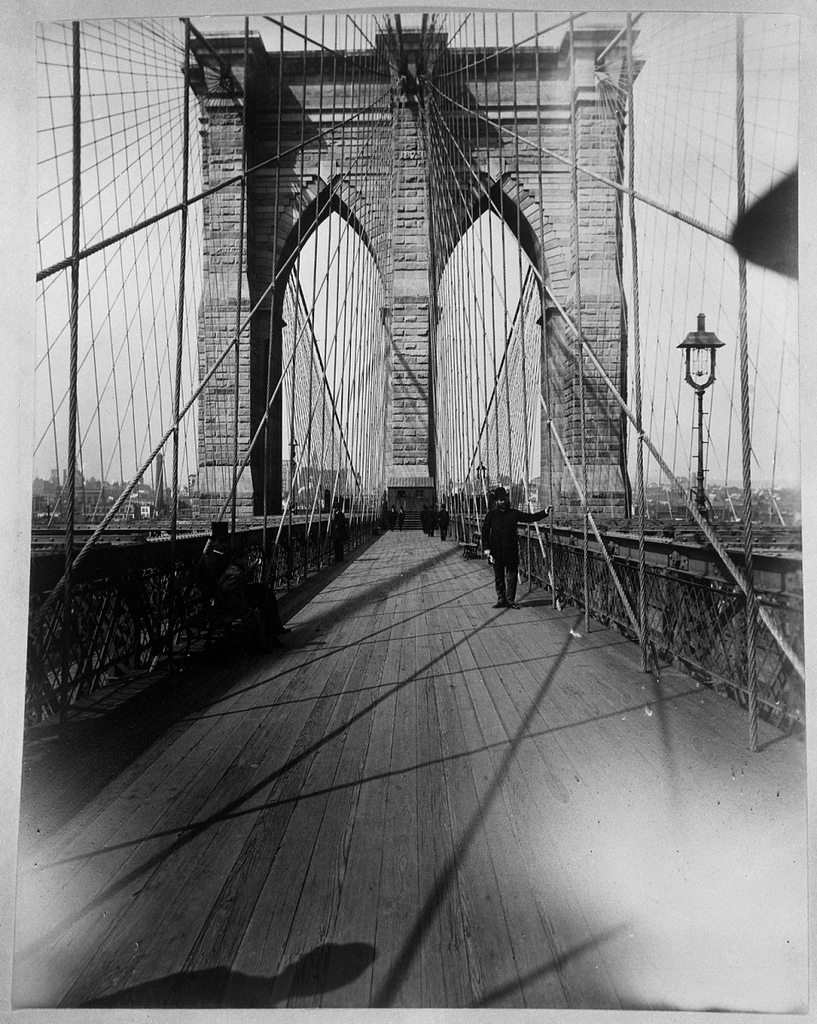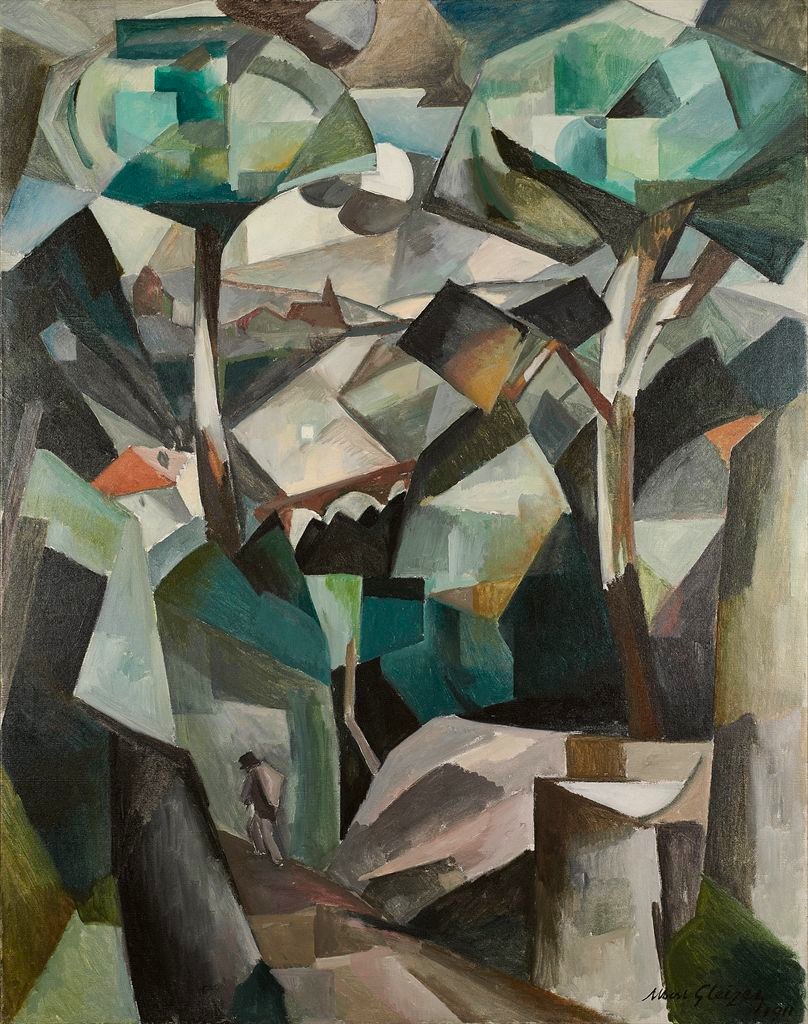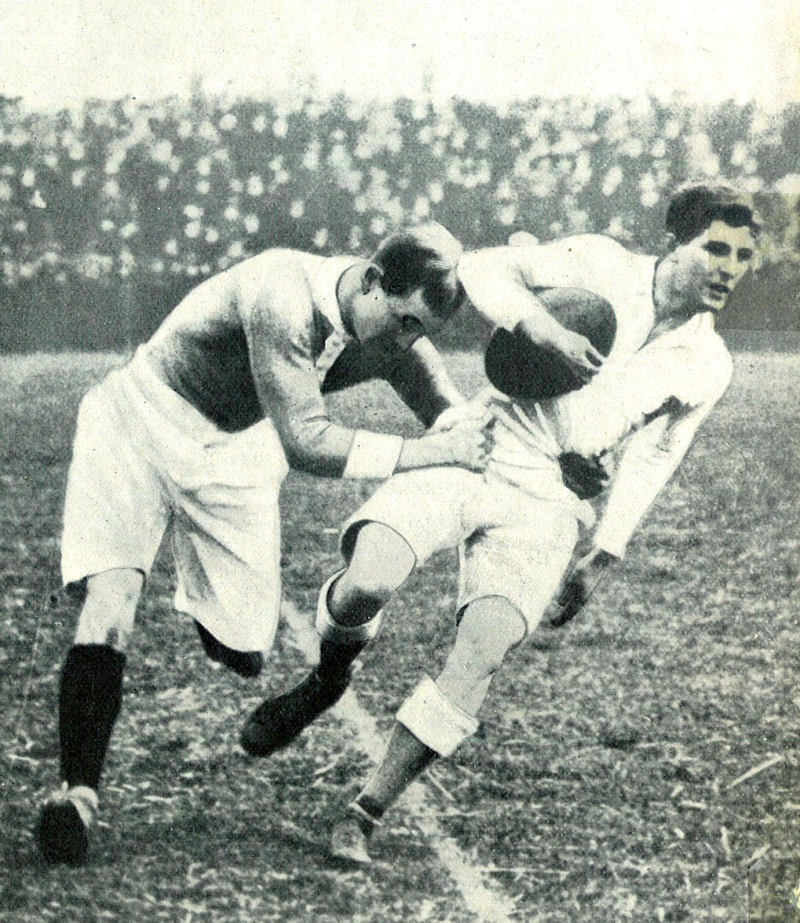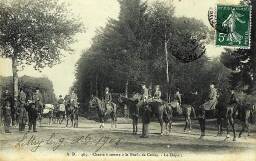|
Brooklyn Bridge (Gleizes)
''Brooklyn Bridge'' is a 1915 painting by the French artist, theorist and writer Albert Gleizes. ''Brooklyn Bridge'' was exhibited at the Montross Gallery, New York, 1916 (no. 40) along with works by Jean Crotti, Marcel Duchamp and Jean Metzinger. This is the first in a series of three highly abstract paintings by Gleizes of the Brooklyn Bridge. It was the most abstract painting of the bridge to date. Gleizes and the Italian-American artist Joseph Stella had been friends since 1915 and it has been of interest to compare this painting with Stella's ''Brooklyn Bridge'' of 1919-20. The American collector John Quinn acquired ''Brooklyn Bridge'' and several other works by Gleizes that had been on view at Montross Gallery, either during the exhibition or subsequently. In 1927, an exhibition and sale of Quinn's art collection took place in New York City. The sale was conducted by Otto Bernet and Hiram H. Parke at the American Art Galleries. A catalogue was published for the occasion ... [...More Info...] [...Related Items...] OR: [Wikipedia] [Google] [Baidu] |
Albert Gleizes
Albert Gleizes (; 8 December 1881 – 23 June 1953) was a French artist, theoretician, philosopher, a self-proclaimed founder of Cubism and an influence on the School of Paris. Albert Gleizes and Jean Metzinger wrote the first major treatise on Cubism, ''Du "Cubisme"'', 1912. Gleizes was a founding member of the Section d'Or group of artists. He was also a member of ''Der Sturm'', and his many theoretical writings were originally most appreciated in Germany, where especially at the Bauhaus his ideas were given thoughtful consideration. Gleizes spent four crucial years in New York, and played an important role in making America aware of modern art. He was a member of the Society of Independent Artists, founder of the Ernest-Renan Association, and both a founder and participant in the Abbaye de Créteil. Gleizes exhibited regularly at Léonce Rosenberg's ''Galerie de l’Effort Moderne'' in Paris; he was also a founder, organizer and director of Abstraction-Création. From the mid-1 ... [...More Info...] [...Related Items...] OR: [Wikipedia] [Google] [Baidu] |
Fountain (Duchamp)
''Fountain'' is a readymade sculpture by Marcel Duchamp in 1917, consisting of a porcelain urinal signed "R. Mutt". In April 1917, an ordinary piece of plumbing chosen by Duchamp was submitted for an exhibition of the Society of Independent Artists, the inaugural exhibition by the Society to be staged at The Grand Central Palace in New York. When explaining the purpose of his readymade sculpture, Duchamp stated they are "everyday objects raised to the dignity of a work of art by the artist's act of choice." In Duchamp's presentation, the urinal's orientation was altered from its usual positioning.Gavin Parkinson, ''The Duchamp Book: Tate Essential Artists Series'' Harry N. Abrams, 2008, p. 61, [...More Info...] [...Related Items...] OR: [Wikipedia] [Google] [Baidu] |
Carlos Salzedo
Carlos Salzedo (6 April 1885 – 17 August 1961) was a French harpist, pianist, composer and conductor. His compositions made the harp into a virtuoso instrument. He influenced many composers with his new ideas for the harp's sounds through his work with the International Composers' Guild. His many harp students performed in prominent orchestras. Salzedo started studying at the Paris Conservatory at age nine and won the ''premier prix'' in harp and piano when he was just 16. He started his solo recital career at age 18, and moved to the United States of America six years later, playing harp with the Metropolitan Opera House in New York City. He toured extensively with the Trio de Lutèce, where he played harp with Georges Barrère on flute and Paul Kéfer on cello. After being drafted into the French Army during World War I, Salzedo returned to the United States and continued touring with the trio. He developed a method of using gestures in his harp method, inspired by dancer Vas ... [...More Info...] [...Related Items...] OR: [Wikipedia] [Google] [Baidu] |
Albert Gleizes, 1915, Composition Pour Jazz, Oil On Cardboard, 73 X 73 Cm, Solomon R
Albert may refer to: Companies * Albert (supermarket), a supermarket chain in the Czech Republic * Albert Heijn, a supermarket chain in the Netherlands * Albert Market, a street market in The Gambia * Albert Productions, a record label * Albert Computers, Inc., a computer manufacturer in the 1980s Entertainment * ''Albert'' (1985 film), a Czechoslovak film directed by František Vláčil * ''Albert'' (2015 film), a film by Karsten Kiilerich * ''Albert'' (2016 film), an American TV movie * ''Albert'' (Ed Hall album), 1988 * "Albert" (short story), by Leo Tolstoy * Albert (comics), a character in Marvel Comics * Albert (''Discworld''), a character in Terry Pratchett's ''Discworld'' series * Albert, a character in Dario Argento's 1977 film ''Suspiria'' Military * Battle of Albert (1914), a WWI battle at Albert, Somme, France * Battle of Albert (1916), a WWI battle at Albert, Somme, France * Battle of Albert (1918), a WWI battle at Albert, Somme, France People * Albert (given ... [...More Info...] [...Related Items...] OR: [Wikipedia] [Google] [Baidu] |
Les Joueurs De Football
''Les Joueurs de football'', also referred to as ''Football Players'', is a 1912–13 painting by the French artist, theorist and writer Albert Gleizes. The work was exhibited at the Salon des Indépendants, Paris, March–May 1913 (no. 1293). September through December 1913 the painting was exhibited at Erster Deutscher Herbstsalon, Berlin (no. 147). The work was featured at Galeries Dalmau in Barcelona, 29 November – 12 December 1916 (no. 31), Gleizes' first one-person show. The work was again exhibited at Galeries Dalmau 16 October – 6 November 1926 (no. 7). Stylistically Gleizes' ''Football Players'' exemplifies the principle of mobile perspective laid out in ''Du "Cubisme"'', written by himself and French painter Jean Metzinger. Guillaume Apollinaire wrote about ''Les Joueurs de football'' in an article titled "Le Salon des indépendants", published in ''L'Intransigeant'', 18 March 1913, and again in "A travers le Salon des indépendants", published in ''Montjoie!'', Numé ... [...More Info...] [...Related Items...] OR: [Wikipedia] [Google] [Baidu] |
Harvest Threshing
''Le Dépiquage des Moissons'', also known as ''Harvest Threshing'', and ''The Harvesters'', is an immense oil painting created in 1912 by the French artist, theorist and writer Albert Gleizes (1881–1953). It was first revealed to the general public at the Salon de la Section d'Or, ''Galerie La Boétie'' in Paris, October 1912 (no. 43). This work, along with ''La Ville de Paris'' (''City of Paris'') by Robert Delaunay, is the largest and most ambitious Cubism, Cubist painting undertaken during the pre-War Cubist period. Formerly in the collection of the Solomon R. Guggenheim Museum in New York, this monumental painting by Gleizes is exhibited at the National Museum of Western Art, in Tokyo, Japan. Description The work is an oil painting on canvas with dimensions 269 x 353 cm (106 x 138 in), signed and dated lower right, Gleizes, 1912. "''Harvest Threshing''", wrote curator and art historian Daniel Robbins (art historian), Daniel Robbins for the Gleizes Guggenheim Retrospect ... [...More Info...] [...Related Items...] OR: [Wikipedia] [Google] [Baidu] |
La Chasse (painting)
''La Chasse'', also referred to as ''The Hunt'', is a painting created in 1911 by the French artist, theorist and writer Albert Gleizes. The work was exhibited at the 1911 Salon d'Automne (no. 610); Jack of Diamonds, Moscow, 1912; the Salon de la Société Normande de Peinture Moderne, Rouen, summer 1912; the Salon de la Section d'Or, Galerie La Boétie, 1912 (no. 37), ''Le Cubisme'', Musée National d'Art Moderne, Paris, 1953 (no. 64 bis), and several major exhibitions during subsequent years. In 1913 the painting was reproduced in '' Les Peintres Cubistes, Méditations esthétiques'' by Guillaume Apollinaire. Executed in a highly dynamic Cubist style, with multiple faceted views, the work nevertheless retains recognizable elements relative to its subject matter. Description ''La Chasse'' is an oil painting on canvas with dimensions 123.2 by 99 cm (48.5 x 39 inches) signed "Albert Gleizes", lower right. Painted in 1911. In this outdoor hunting scene the horizon li ... [...More Info...] [...Related Items...] OR: [Wikipedia] [Google] [Baidu] |
Passy, Bridges Of Paris (Gleizes)
''Passy, Bridges of Paris'', also called ''Les ponts de Paris (Passy)'', or ''Paysage à Passy'', is a painting created in 1912 by the French artist, theorist and writer Albert Gleizes. The work was exhibited at the Salon de la Société Normande de Peinture Moderne, Rouen, 1912 (titled ''Passy''); the Salon de la Section d'Or, Galerie La Boétie, Paris, 1912 (titled ''Passy''); Manes Moderni Umeni, Vystava, Prague, 1914 (titled ''Paysage à Passy''); and Galerie Der Sturm, Berlin, July, 1914. ''Passy'' was one of a small group of works chosen to be reproduced in the seminal treatise '' Du "Cubisme"'', written by Albert Gleizes and Jean Metzinger in 1912 and published by Eugène Figuière the same year. Executed in a highly personal Cubist style with multiple viewpoints and planar faceting, this is one of a number of paintings from 1912-13 involving the theme of the bridge in an urban landscape. In opposition to classical perspective as a mode of representation, Gleizes empl ... [...More Info...] [...Related Items...] OR: [Wikipedia] [Google] [Baidu] |
Abbaye De Créteil
L'Abbaye de Créteil or Abbaye group (french: Le Groupe de l'Abbaye) was a utopian artistic and literary community founded during the month of October, 1906. It was named after the Créteil Abbey, as most gatherings took place in that suburb of Paris. History In 1905 and early 1906 a group of young artists and poets holding meetings at various locations found that society, the way it was organized, did not take into consideration an environment needed for creative expression, nor the goals it proposed. Founded officially in the autumn of 1906 by the painter Albert Gleizes, and the poets , , Alexandre Mercereau and Charles Vildrac, L'Abbaye de Créteil was a '' phalanstère'', a utopian community. The movement drew its inspiration from the ''Abbaye de Thélème,'' a fictional creation by Rabelais in his novel ''Gargantua''. It was closed down by its members early in 1908. Georges Duhamel and Vildrac settled in Créteil, just to the southeast of Paris, in a house in a park-like ... [...More Info...] [...Related Items...] OR: [Wikipedia] [Google] [Baidu] |
Alan Trachtenberg
Alan Zelick Trachtenberg (March 22, 1932 – August 18, 2020) was an American historian and the Neil Gray Jr. Professor of English and professor emeritus of American Studies at Yale University. Born in Philadelphia, Trachtenberg attended Temple University, and earned his Ph.D. in American Studies at the University of Minnesota, writing his dissertation on the Brooklyn Bridge in American literature. Trachtenberg taught at Penn State for eight years, then spent a year at the Stanford Center for Advanced Study in the Behavioral Sciences, before joining the faculty at Yale in 1969. He resided in Hamden, Connecticut with his wife Betty (née Glassman), pianist and college administrator, was Dean of Students at Yale University from 1987 to 2007. Trachtenberg's landmark 1990 book, ''Reading American Photographs: Images as History, Mathew Brady to Walker Evans Walker Evans (November 3, 1903 – April 10, 1975) was an American photographer and photojournalist best known for his ... [...More Info...] [...Related Items...] OR: [Wikipedia] [Google] [Baidu] |
Max Weber
Maximilian Karl Emil Weber (; ; 21 April 186414 June 1920) was a German sociologist, historian, jurist and political economist, who is regarded as among the most important theorists of the development of modern Western society. His ideas profoundly influence social theory and research. While Weber did not see himself as a sociologist, he is recognized as one of the fathers of sociology along with Karl Marx, and Émile Durkheim. Unlike Durkheim, Weber did not believe in monocausal explanations, proposing instead that for any outcome there can be multiple causes. Also unlike Durkheim, Weber was a key proponent of methodological anti-positivism, arguing for the study of social action through interpretive rather than purely empiricist methods, based on a subjective understanding of the meanings that individuals attach to their own actions. Weber's main intellectual concern was in understanding the processes of rationalisation, secularisation, and the ensuing sense of "disenchan ... [...More Info...] [...Related Items...] OR: [Wikipedia] [Google] [Baidu] |
John Marin
John Marin (December 23, 1870 – October 2, 1953) was an early American modernist artist. He is known for his abstract landscapes and watercolors. Biography Marin was born in Rutherford, New Jersey. His mother died nine days after his birth, and he was raised by two aunts in Weehawken, New Jersey.. He attended the Stevens Institute of Technology for a year, and tried unsuccessfully to become an architect. From 1899 to 1901, Marin attended the Pennsylvania Academy of the Fine Arts in Philadelphia. In Philadelphia he studied with Thomas Pollock Anshutz, Hugh Henry Breckenridge and William Merritt Chase. He also studied at the Art Students League of New York.. In 1905, like many American artists Marin went to Europe, initially to Paris. He exhibited his work in the Salon, where he also got his first exposure to modern art. He traveled through Europe for six years, and painted in the Netherlands, Belgium, England, and Italy. In Europe, he mastered a type of watercolor where he ... [...More Info...] [...Related Items...] OR: [Wikipedia] [Google] [Baidu] |









